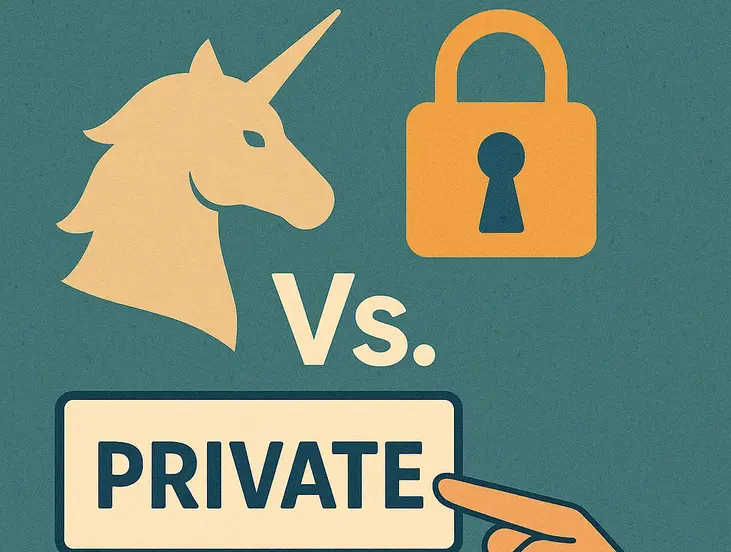Companies are increasingly choosing to remain private longer, fundamentally changing how capital markets operate. What used to take seven years to reach public markets now takes 11 years, with many companies staying private for over a decade. This shift has created an explosion of unicorns—private companies valued at over $1 billion—growing from virtually none in 2010 to over 1,400 today worth more than $5 trillion combined.
The reasons for this privacy preference are straightforward. Being a public company is expensive and administratively burdensome. CEOs of public companies describe earnings weeks as the worst part of their professional lives. The costs are substantial—even micro-cap companies pay at least $5 million annually for public company compliance, with larger companies paying significantly more.
Table of Contents
The Cost of Going Public
Public companies face constant scrutiny and regulatory requirements that private companies avoid. Quarterly earnings reports create pressure for short-term performance that can conflict with long-term strategic planning. The administrative overhead includes SEC filings, investor relations, compliance departments, and legal requirements that consume management time and company resources.
Professor Gordon Phillips from Dartmouth’s Tuck School of Business explains that going public requires releasing proprietary information that companies prefer keeping confidential. This includes strategic relationships, competitive advantages, and operational details that competitors could exploit. Companies wait until they’ve established recognizable brand names and sufficient market presence before exposing themselves to public scrutiny.
Uber and Lyft exemplify this strategy, waiting to go public until they had massive consumer bases and established market positions. The delay allowed them to build defensible businesses before facing quarterly earnings pressure and public market volatility.
The Private Capital Advantage
The primary reason companies can stay private longer is the abundance of private capital available. Venture capital and growth equity funds provide substantial funding without requiring public market access. This capital availability means companies don’t need to go public to finance growth, operations, or expansion.
Private markets offer different dynamics than public markets. In private markets, the ultimate owner sets the price through negotiated transactions. Public markets rely on marginal traders setting prices that change constantly throughout trading sessions. This difference affects valuation accuracy and stability.
However, private market valuations can be misleading. The gap between marked valuations and actual trade prices can be significant. Private companies may carry inflated valuations that wouldn’t hold up in public markets where daily trading provides price discovery.
The Benefits Companies Miss
Staying private has drawbacks that companies must weigh against privacy benefits. Public companies gain liquidity for shareholders and acquisition currency through stock-based purchases. Apple’s acquisition of Beats by Dr. Dre for $2 billion demonstrates how public stock enables large acquisitions without requiring cash or debt.
Public companies can provide employee incentives through stock options and equity compensation. While private companies have developed internal markets for employee liquidity, these markets lack the depth and pricing efficiency of public exchanges.
Public company status provides credibility with suppliers, business partners, and employees. The transparency and regulatory oversight create trust that private companies must build through other means. Public companies also gain access to broader capital markets for future financing needs.
The Retail Investor Impact
The trend toward longer private periods significantly impacts retail investors. The number of public companies has shrunk from over 7,000-8,000 companies 25 years ago to only 4,000 today. This reduction limits investment opportunities for individual investors who cannot access private markets.
More importantly, by the time companies go public, they’ve often realized their explosive growth phases. When Apple went public, it had only completed one venture capital round, allowing public investors to participate in decades of growth. Today’s companies going public at $20 billion or $100 billion valuations have already captured most of their early-stage appreciation.
Retail investors miss the period of heady growth that occurs during private company phases. Companies like OpenAI and SpaceX remain private, preventing individual investors from participating in their growth until potential future public offerings.
The Historical Perspective
Despite concerns about missing private company growth, public markets have delivered exceptional long-term returns. Analysis comparing $1 million invested in residential real estate in Los Angeles zip code 90049 versus the S&P 500 from 1960 to today shows stark differences. Real estate returned $7.7 million while the S&P 500 with dividends reinvested reached $1.1 billion.
This historical performance suggests retail investors shouldn’t feel excluded from wealth creation. Public markets provide access to diversified portfolios and long-term compounding that private investments cannot match for most individuals.
The Economic Implications
Vibrant public markets historically correlate with strong economic performance. The most successful economies over time have maintained robust public markets that provide capital allocation efficiency and broad participation in economic growth.
However, individuals now have indirect exposure to private markets through pension plans and defined benefit plans. These institutional investors allocate significant portions of portfolios to private equity and venture capital, providing some private market exposure to regular citizens through retirement accounts.
The Economic Implications
Strong public markets have always been a signal of economic health — driving capital efficiency and shared prosperity. Yet as more capital shifts toward private equity and venture funding, individual participation grows indirect, flowing through pensions and institutional portfolios. Understanding these shifts is key to navigating where wealth — and opportunity — are truly being created.
Explore Finance & Investment Strategy Roles →Strategic Considerations for Companies
The decision to go public or stay private involves more than capital structure and trade secret protection. Business leaders must consider what type of company they want to build and what investor base aligns with their strategic vision.
Companies should develop investor strategies as robust as customer strategies. CEOs typically have clear answers about customer targeting, geographic focus, and value propositions. Fewer have equally clear investor strategies defining what type of investors they want, why, and how those investors will influence company direction.
The choice between public and private status affects company culture, decision-making timelines, and strategic flexibility. Public companies face quarterly pressure that can conflict with long-term investments. Private companies maintain more operational flexibility but may lack the discipline that public market scrutiny provides.
Key Takeaway
Companies now take 11 years to go public versus 7 years historically, creating 1,400+ unicorns worth $5 trillion while shrinking public market opportunities. Retail investors miss early-stage growth but public markets still deliver superior long-term returns.
Frequently Asked Questions
Q: Why are companies staying private longer?
A: Companies prefer privacy to avoid public company costs ($5+ million annually), regulatory scrutiny, and proprietary information disclosure. Abundant private capital from venture funds and growth equity enables extended private periods without public market access.
Q: How has this affected unicorn companies?
A: Unicorns grew from virtually none in 2010 to over 1,400 today worth $5+ trillion combined. Companies can reach billion-dollar valuations while remaining private, avoiding public market pressures and requirements.
Q: What do companies miss by staying private?
A: Public companies gain liquidity for shareholders, acquisition currency through stock purchases, employee incentive tools, credibility with partners, and access to broader capital markets for future financing needs.
Q: How does this impact retail investors?
A: Public companies shrank from 7,000-8,000 to 4,000 today, limiting investment opportunities. Companies going public at $20-100 billion valuations have already captured early-stage growth that retail investors historically participated in.
Q: Are retail investors missing out on returns?
A: While missing private company growth phases, public markets delivered $1.1 billion returns versus $7.7 million for real estate from 1960-2025. Public markets still provide superior long-term wealth creation for most individuals.
Q: What should companies consider when choosing public vs. private status?
A: Companies need investor strategies as clear as customer strategies, defining what type of investors they want and how those investors will influence company direction, culture, and decision-making timelines.




